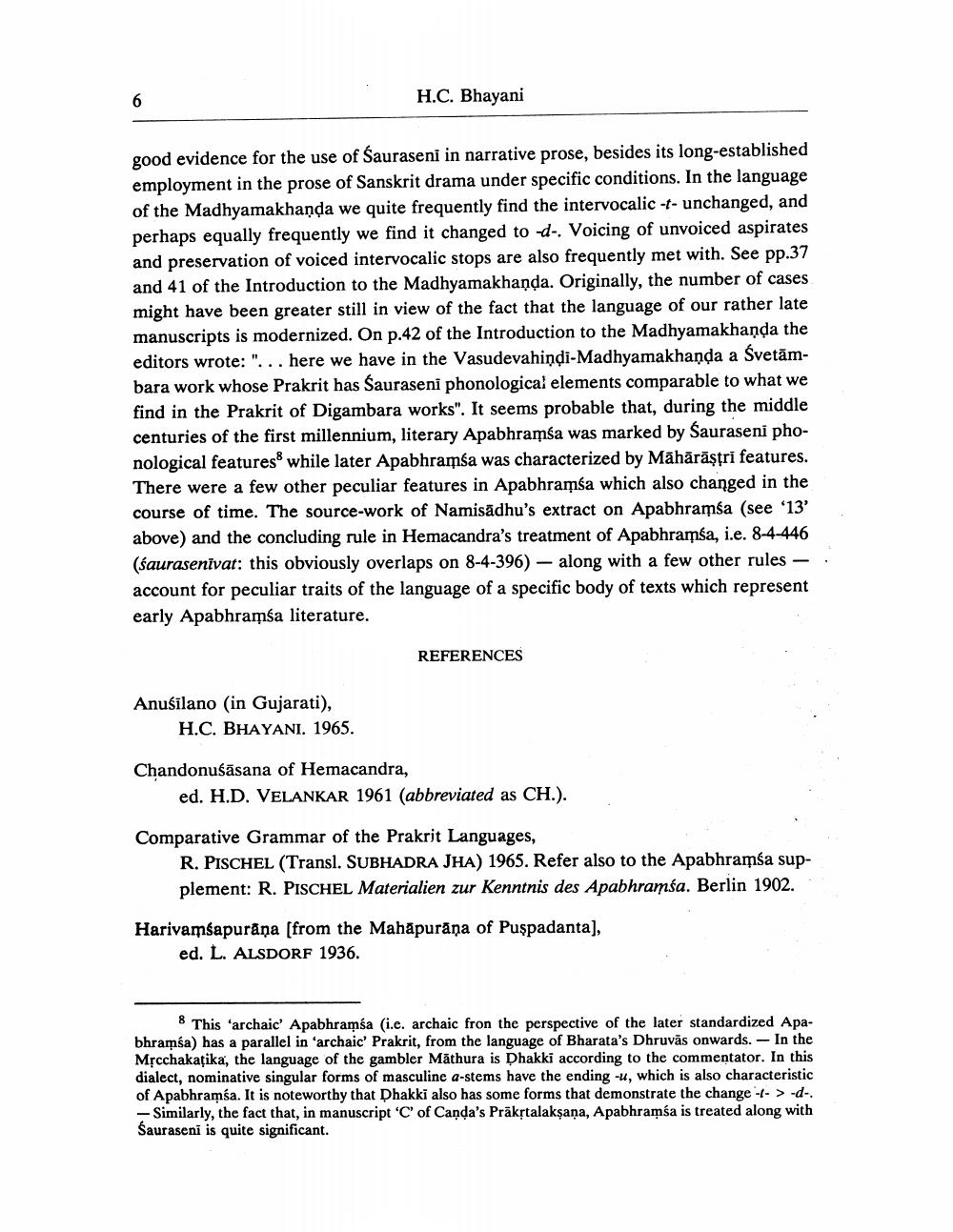Book Title: On Early Apbhramsa Author(s): H C Bhayani Publisher: H C Bhayani View full book textPage 6
________________ H.C. Bhayani good evidence for the use of Sauraseni in narrative prose, besides its long-established employment in the prose of Sanskrit drama under specific conditions. In the language of the Madhyamakhanda we quite frequently find the intervocalic -t- unchanged, and perhaps equally frequently we find it changed to d-. Voicing of unvoiced aspirates and preservation of voiced intervocalic stops are also frequently met with. See pp.37 and 41 of the Introduction to the Madhyamakhanda. Originally, the number of cases might have been greater still in view of the fact that the language of our rather late manuscripts is modernized. On p.42 of the Introduction to the Madhyamakhanda the editors wrote: "... here we have in the Vasudevahindi-Madhyamakhanda a Svetāmbara work whose Prakrit has Sauraseni phonological elements comparable to what we find in the Prakrit of Digambara works". It seems probable that, during the middle centuries of the first millennium, literary Apabhramsa was marked by Sauraseni phonological features while later Apabhramsa was characterized by Māhārāştri features. There were a few other peculiar features in Apabhramśa which also changed in the course of time. The source-work of Namisādhu's extract on Apabhramsa (see '13' above) and the concluding rule in Hemacandra's treatment of Apabhramsa, i.e. 8-4-446 (saurasenivat: this obviously overlaps on 8-4-396) - along with a few other rules - account for peculiar traits of the language of a specific body of texts which represent early Apabhramsa literature. REFERENCES Anuśīlano (in Gujarati), H.C. BHAYANI. 1965. Chandonuśāsana of Hemacandra, ed. H.D. VELANKAR 1961 (abbreviated as CH.). Comparative Grammar of the Prakrit Languages, R. PISCHEL (Transl. SUBHADRA JHA) 1965. Refer also to the Apabhramsa supplement: R. PISCHEL Materialien zur Kenntnis des Apabhramsa. Berlin 1902. Harivamsapurana (from the Mahāpurāņa of Puspadanta), ed. L. ALSDORF 1936. 8 This 'archaic Apabhramsa (i.e. archaic fron the perspective of the later standardized Apabhramsa) has a parallel in 'archaic' Prakrit, from the language of Bharata's Dhruvās onwards. - In the Mșcchakațika, the language of the gambler Mathura is Dhakki according to the commentator. In this dialect, nominative singular forms of masculine a-stems have the ending -u, which is also characteristic of Apabhramśa. It is noteworthy that Dhakki also has some forms that demonstrate the change --> -d- Similarly, the fact that, in manuscript 'C' of Canda's Präktalaksana, Apabhramsa is treated along with Sauraseni is quite significant.Page Navigation
1 ... 4 5 6 7
